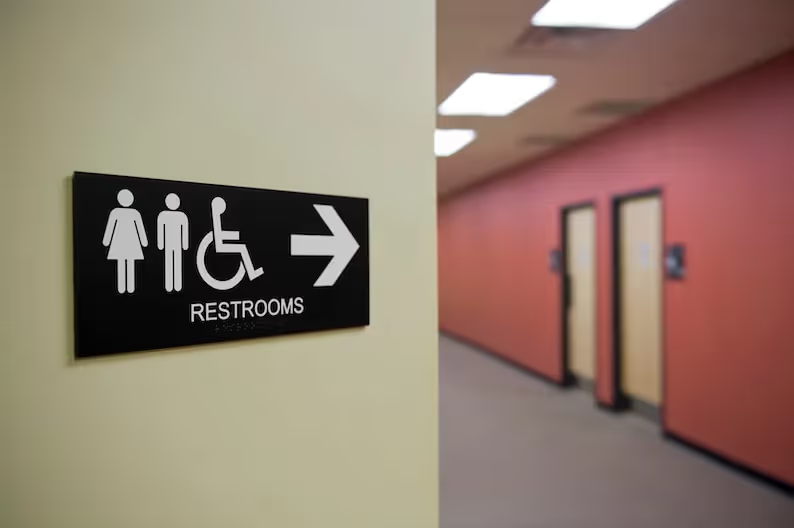It's a topic, so embarrassing no one wants to talk about it. Not even to their doctor. However, it's a topic that needs to be addressed as it could be a sign of an underlying medical condition. And regardless of what you think or have been told, it's not normal. So, what's the topic…? Urinary incontinence in older adults. Urinary incontinence is a condition that affects more than 50 percent of older adults. It's a common issue, but one many hide – for obvious reasons. As a result, many suffer in silence. But just because it's common doesn't mean it's normal, and you should ignore it and pass it off as just part of getting older. There are ways to treat this most embarrassing and unfortunate condition.
What is Urinary Incontinence?
Urinary incontinence is the involuntary loss of urine. You know, those moments where you can't make it to the bathroom in time. Or you have a slight accident while exercising, sneezing, or coughing. It can happen to anyone but is more common in older adults, especially women. There are five different types of incontinence. They include: Stress Incontinence – Also called stress urinary incontinence, this type is very common in women. Contrary to its name, stress incontinence is not caused by emotional stress or from being nervous but instead by weakened muscles. It occurs when there is a small amount of urine leakage when pressure is placed on the abdomen and bladder. Over time and due to pregnancy, hormonal changes, and genetics, the muscle responsible for keeping your bladder closed can become weakened and lax. This can lead to slight leakage when a sneeze, cough, or strenuous activity causes pressure to be placed on the bladder region. Urgency Urinary Incontinence – Commonly referred to as overactive bladder, this type of incontinence occurs with little or no warning. The loss of urine also tends to be in large amounts. Overflow Incontinence – This type is when you experience frequent leakage in small amounts due to not being able to empty the bladder completely. This is common in men who experience prostate issues. Mixed Incontinence – This is a combination of the three types listed above, but mostly a combination of stress and urgency urinary incontinence. Functional Incontinence – This type of incontinence has nothing to do with the bladder. Functional incontinence in older adults is because of physical or mental impairments that prevent them from getting to the bathroom in time.
Causes of Urinary Incontinence in Older Adults
The causes of urinary incontinence in seniors can vary. Gender plays a significant role in some of the different types. For women, childbirth, menopause, and pelvic floor atrophy can all lead to some degree of urinary incontinence. For men, the most common reason they suffer urinary incontinence is due to their prostate. Other causes that can affect both men and women include:
- Infection
- Bladder irritants, such as alcohol and caffeine
- Constipation
- Parkinson's disease
- Multiple sclerosis
- Alzheimer's disease
- Stroke
- Diabetes
- Obesity
- Certain medications
Diagnosing Urinary Incontinence
Before being diagnosed with urinary incontinence, you must first discuss the issue with your healthcare provider. There is no reason for embarrassment. If you suffer from involuntary loss of urine in any capacity, you need to have an honest discussion with your doctor. Some of the questions your doctor may ask include:
- How frequently are you experiencing urine leakage?
- Is it affecting your work, social life, or sex life?
- Do you lose small amounts, or do you soak your clothing or pad?
- Is it worse when you cough or sneeze?
- Do you have to rush to the bathroom to avoid an accident?
Again, it's important that you answer truthfully. This helps your doctor determine the cause of your incontinence and what kind of treatment will be successful. In addition to asking you questions, your physician will likely order a urinalysis to check for any signs of infection. You might also be asked to keep a bladder diary that tracks how much you drink, how frequently you urinate, how much you urinate, and whether you have any unexpected urges.
Treatment Options for Urinary Incontinence
Once your doctor determines the reason for your incontinence, a treatment plan can be devised. Depending on the cause and severity of your urinary incontinence, a combination of treatments may be necessary.
Behavioral Techniques
This is a non-invasive treatment option that is successful in treating less severe types of incontinence. Behavioral techniques involve bladder training and double voiding. Bladder training helps to delay urination after you get the urge to go. Double voiding helps you to empty your bladder in its entirety. Scheduling bathroom breaks and avoiding bladder irritants are also behavioral techniques for treating incontinence.
Pelvic Floor Muscle Exercises
This treatment option works to strengthen the muscles that help control urination. For example, to do pelvic floor muscle exercises, you contract the muscles you would use to stop urinating and hold for five seconds, and then relax for five seconds. These exercises are also called Kegel exercises and are usually effective at treating stress and urge incontinence.
Medication
Your provider might prescribe medication to help relax your bladder. This not only works to control an overactive bladder, but it may also help increase the amount of urine your bladder can hold.
Medical Device
There are a couple of devices that are commonly prescribed to women experiencing urinary incontinence. These include a urethral insert and a pessary. These devices are inserted into the vagina, similar to a tampon, to prevent urine leakage.
Surgery
For more severe cases of urinary incontinence in older adults, surgery might be an option. Several surgical options, such as sling procedures, prolapse surgery, and artificial urinary sphincter placement, have proven successful at treating problems that cause urinary incontinence.
Start By Talking to Your Healthcare Provider Today!
Don't let urinary incontinence prevent you from doing the things and activities you enjoy. If you're suffering from urine leakage, you're not alone. Get the help and relief you deserve. Schedule an appointment with your provider today and get on a path to an accident-free life.




